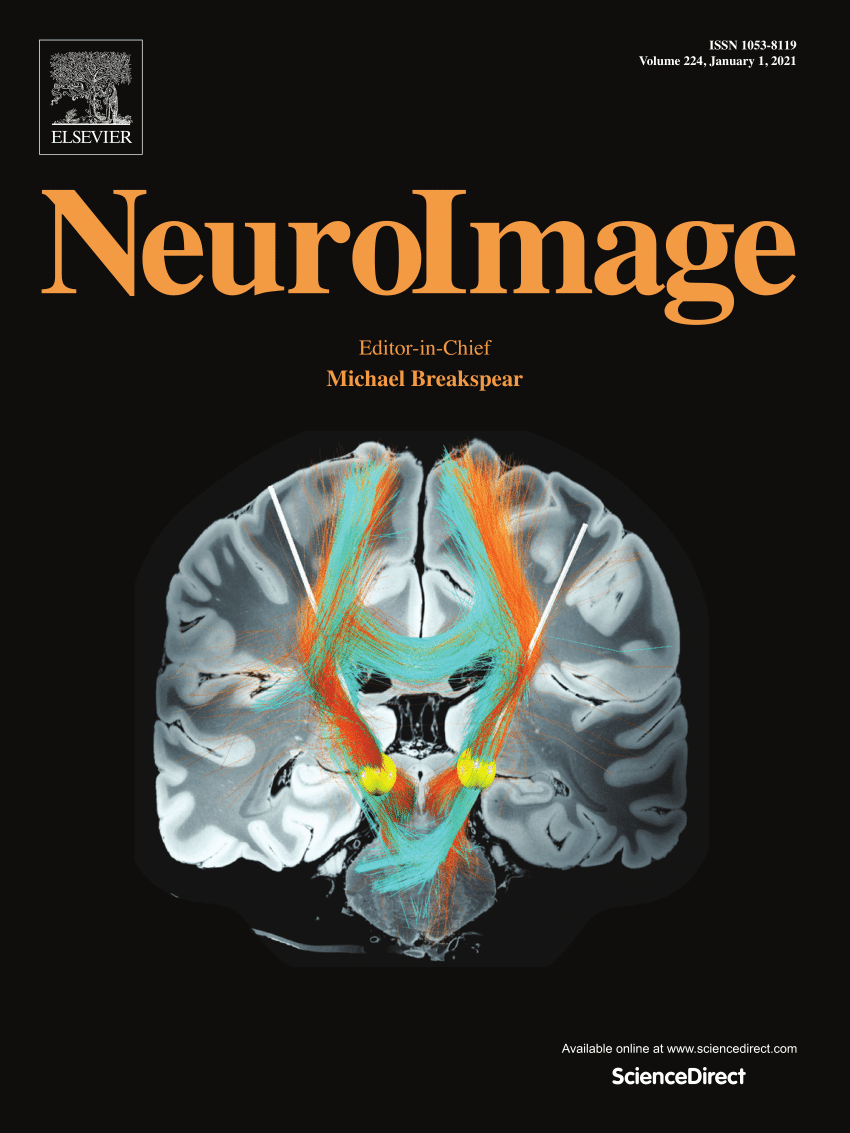Assessment of cortical excitability in awake rhesus macaques with transcranial magnetic stimulation: Translational insights from recruitment curves
IF 4.7
2区 医学
Q1 NEUROIMAGING
引用次数: 0
Abstract
Cortical excitability (CE) is commonly assessed via motor evoked potentials (MEPs) elicited by single-pulse transcranial magnetic stimulation (sp-TMS). While the motor threshold (MT) remains the most widely used measure of CE, it provides a limited, one-dimensional measure based on a fixed MEP amplitude criterion. In contrast, the recruitment curve (RC) offers a more comprehensive characterization of corticospinal recruitment dynamics. To date, the few available preclinical TMS studies measuring RC in non-human primates have been conducted under anaesthesia with limited translational relevance. Hence, we characterised CE in 20 sessions of 4 awake rhesus macaques by recording RCs at nine stimulation intensity levels and parametrising them using exponentiated sigmoid functions. The traditional 100 µV MEP MT criterion level (SI100µV) aligned most closely with the inflection point of the RC sigmoid fit and was consistent with relative frequency-based traditional MT (tradMT) measured in separate sessions. The onset of the logarithmic recruitment phase of the sigmoid (lower ankle point) was found at 0.9 × SI100µV/tradMT. Well-formed MEPs were measured below the SI100µV/tradMT, but not below the lower ankle point, which is a physiologically relevant response threshold. Thus, in rhesus macaques the 100-µV criterion may be suitable to approximate the RC inflection point, but not the physiological motor threshold. The overall RC shape was consistent with previous human data, however, plateau MEP amplitudes were substantially smaller than those reported in humans. These results lay the groundwork for the adaptation of TMS protocols and CE metrics to non-human primates that is necessary for translationally valid research.
经颅磁刺激对清醒恒河猴皮质兴奋性的评估:来自招募曲线的翻译见解。
皮质兴奋性(CE)通常通过单脉冲经颅磁刺激(sp-TMS)引发的运动诱发电位(MEPs)来评估。虽然电机阈值(MT)仍然是最广泛使用的CE测量,但它提供了基于固定MEP幅度标准的有限的一维测量。相比之下,招募曲线(RC)提供了皮质脊髓招募动态的更全面的表征。迄今为止,在非人类灵长类动物中测量RC的少数临床前TMS研究是在麻醉下进行的,具有有限的翻译相关性。因此,我们在4只清醒的恒河猴的20个疗程中,通过记录9种刺激强度下的RCs,并使用指数s形函数对它们进行参数化,来表征CE。传统的100µV MEP MT标准电平(SI100µV)与RC s型拟合的拐点最接近,并且与在单独会议中测量的基于相对频率的传统MT (tradMT)一致。在0.9 × SI100µV/tradMT时,发现乙状窦(踝关节下点)的对数恢复期开始。在SI100µV/tradMT以下测量构造良好的mep,但不低于踝关节下点,这是一个生理相关的反应阈值。因此,在恒河猴中,100µV标准可能适合于近似RC拐点,但不适用于生理运动阈值。整体RC形状与先前的人类数据一致,然而,高原MEP振幅明显小于人类报道的。这些结果为将TMS方案和CE指标应用于非人类灵长类动物奠定了基础,这对于翻译有效的研究是必要的。
本文章由计算机程序翻译,如有差异,请以英文原文为准。
求助全文
约1分钟内获得全文
求助全文
来源期刊

NeuroImage
医学-核医学
CiteScore
11.30
自引率
10.50%
发文量
809
审稿时长
63 days
期刊介绍:
NeuroImage, a Journal of Brain Function provides a vehicle for communicating important advances in acquiring, analyzing, and modelling neuroimaging data and in applying these techniques to the study of structure-function and brain-behavior relationships. Though the emphasis is on the macroscopic level of human brain organization, meso-and microscopic neuroimaging across all species will be considered if informative for understanding the aforementioned relationships.
 求助内容:
求助内容: 应助结果提醒方式:
应助结果提醒方式:


